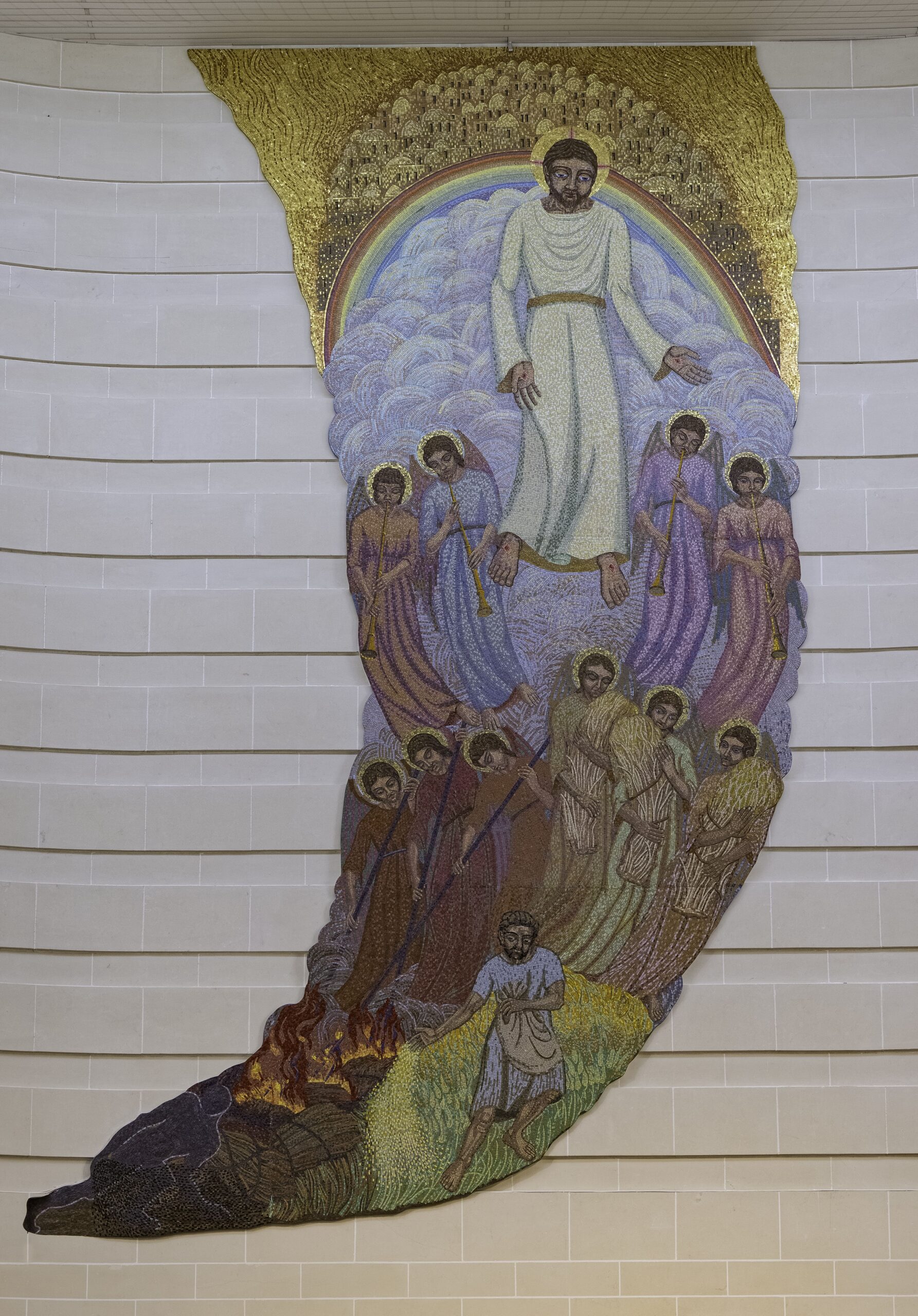
“Let both grow together until the harvest”
The First Reflection on the Mosaic in the Church of “Tal-Erwieħ,” Ħal Tarxien
As the Church turns our gaze towards the second coming of Christ in the final and first days of her liturgical year, in these weeks we shall contemplate the great mosaic which occupies the place of the titular painting in the Church of the Risen Christ at Ħal Tarxien—better known as “Tal-Erwieħ,” precisely because it is the church of the village cemetery.
The present church took the place of an older chapel that had become far too small to meet the pastoral needs of the people living in the area where the parishes of Ħal Tarxien, Christ the King (Paola), and Fgura meet. The Italian architect of the church, Mgr Valerio Vigorelli, was particularly careful to design a building that would harmonise with the nearby remains of the Neolithic Temple of Ħal Tarxien, especially in the use of Maltese stone and in its overall form and decoration.
The mosaic, the work of Angelo Manelli from the Istituto Beato Angelico, takes the form of smoke rising upwards to heaven, as though from the altar itself. It reminds us somewhat of what we find in Psalm 141, which in ancient times the priest would recite quietly at the offertory while walking around the altar to incense it:
“Let my prayer be counted as incense before thee,
Psalm 141:2
and the lifting up of my hands as an evening sacrifice.”
The Book of Revelation also compares the prayers of the saints—the disciples of Jesus who remain faithful to the end—to incense rising towards God (see Rev 5:8; 8:3–4).
What stands out most in this work of contemporary art is that, on different levels, we see taking place simultaneously the struggle between good and evil in the eternal present of history, the final judgement, and the glory which is yet to reach its fullness at the end of time. This work of art revolves around one of the so-called parables of the Kingdom of Heaven that we find in the Gospel according to Matthew—the parable Jesus told about the wheat and the weeds:
Another parable he put before them, saying, ‘The kingdom of heaven may be compared to a man who sowed good seed in his field; but while men were sleeping, his enemy came and sowed weeds among the wheat, and went away. So when the plants came up and bore grain, then the weeds appeared also. And the servants of the householder came and said to him, “Sir, did you not sow good seed in your field? How then has it weeds?” He said to them, “An enemy has done this.” The servants said to him, “Then do you want us to go and gather them?” But he said, “No; lest in gathering the weeds you root up the wheat along with them. Let both grow together until the harvest; and at harvest time I will tell the reapers, Gather the weeds first and bind them in bundles to be burned, but gather the wheat into my barn.”’
Matthew 13:24–30
If we pause to look at the lowest part of the mosaic, we immediately notice a dark figure and a luminous one, both scattering seed—the former of the weeds and the latter of the wheat—and both doing so simultaneously. Such is life: good and evil intertwine and mingle, and goodness must strive to grow, for evil tries to sap its strength. The master’s decision to delay his judgement results from the fact that the weeds—or, rather, tares, as the original Greek implies—and the wheat can be truly distinguished only when they mature and the fruit appears—“the grain is ripe” (Mark 4:28).
In these days, it would do us good to examine ourselves before this image. Recognise that even within your own heart there is both what the Good One has sown and what the evil one has sown. Recognise and discern—but do not uproot rashly. Let the Lord be your reaper in his own time and season, so that you may lose nothing of the good with which he wishes to adorn you and nourish others through it.



